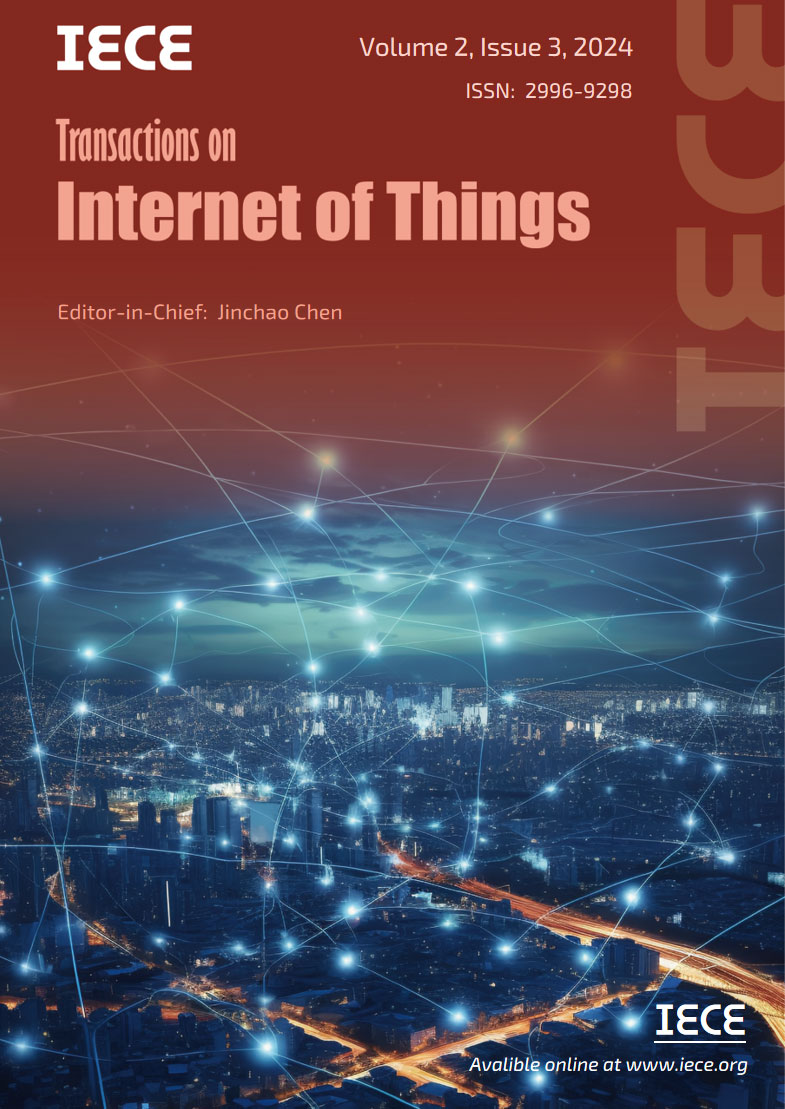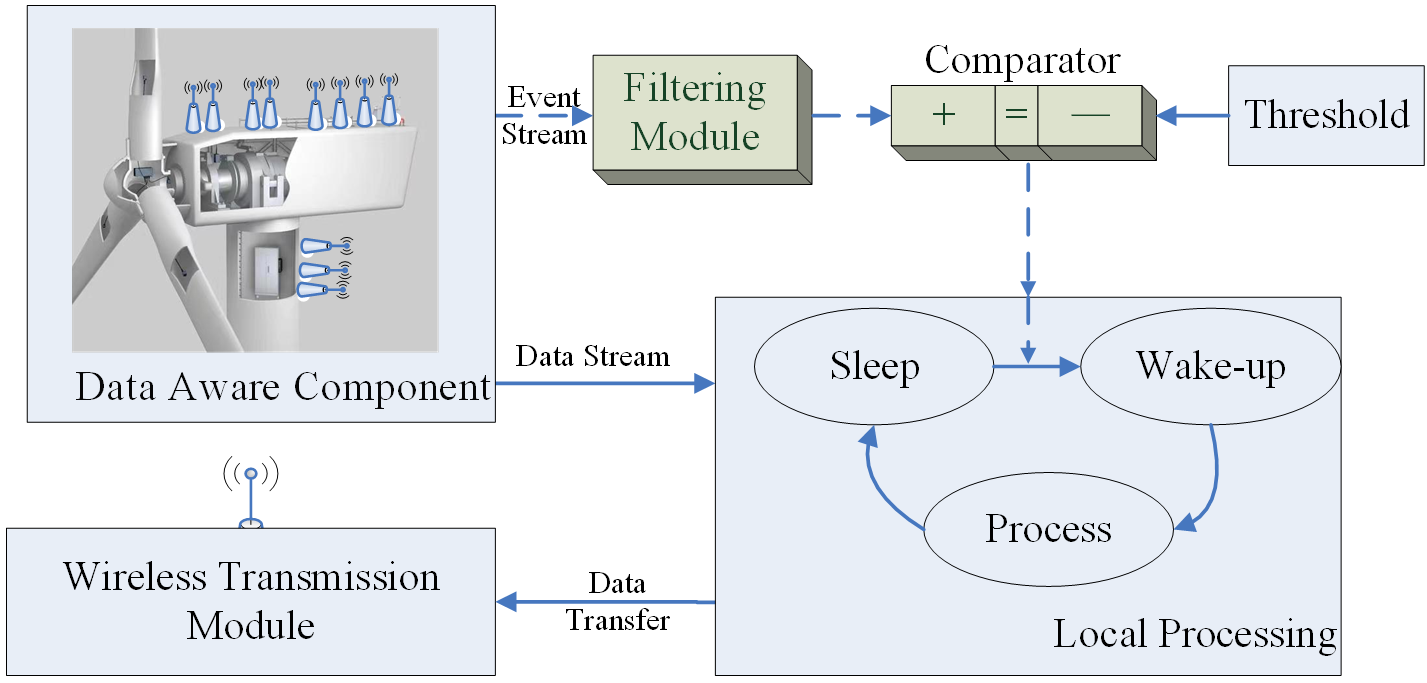IECE Transactions on Internet of Things
ISSN: 2996-9298 (Online)
Email: [email protected]


 Submit Manuscript
Edit a Special Issue
Submit Manuscript
Edit a Special Issue

[1] Wymore, M. L., Van Dam, J. E., Ceylan, H., & Qiao, D. (2015). A survey of health monitoring systems for wind turbines. Renewable and Sustainable Energy Reviews, 52, 976-990.
[2] Lydia, M., & Kumar, G. E. P. (2023). Condition monitoring in wind turbines: a review. Non-Destructive Testing and Condition Monitoring Techniques in Wind Energy, 229.
[3] Salhi, M. S., Touti, E., Benzarti, F., & Lachiri, Z. (2023). Computational sensor nodes optimization for smart anomaly detection applied to wind energy. Renewable Energy Focus, 47, 100489.
[4] Helsen, J. (2021). Review of research on condition monitoring for improved O&M of offshore wind turbine drivetrains. Acoustics Australia, 49(2), 251-258.
[5] Chesterman, X., Verstraeten, T., Daems, P. J., Nowé, A., & Helsen, J. (2023). Overview of normal behavior modeling approaches for SCADA-based wind turbine condition monitoring demonstrated on data from operational wind farms. Wind Energy Science, 8(6), 893-924.
[6] Wondra, B., Malek, S., Botz, M., Glaser, S. D., & Grosse, C. U. (2019). Wireless high-resolution acceleration measurements for structural health monitoring of wind turbine towers. Data-Enabled Discovery and Applications, 3, 1-16.
[7] Kilic, G., & Unluturk, M. S. (2015). Testing of wind turbine towers using wireless sensor network and accelerometer. Renewable Energy, 75, 318-325.
[8] Gong, L., & Chen, Y. (2024). Machine learning-enhanced loT and wireless sensor networks for predictive analysis and maintenance in wind turbine systems. International Journal of Intelligent Networks, 5, 133-144.
[9] Carbajo, R. S., Carbajo, E. S., Basu, B., & Mc Goldrick, C. (2017). Routing in wireless sensor networks for wind turbine monitoring. Pervasive and Mobile Computing, 39, 1-35.
[10] Herrasti, Z., Val, I., Gabilondo, I., Berganzo, J., Arriola, A., & Martínez, F. (2016). Wireless sensor nodes for generic signal conditioning: Application to Structural Health Monitoring of wind turbines. Sensors and Actuators A: Physical, 247, 604-613.
[11] Cheng, F., Qu, L., Qiao, W., & Hao, L. (2018). Enhanced particle filtering for bearing remaining useful life prediction of wind turbine drivetrain gearboxes. IEEE Transactions on Industrial Electronics, 66(6), 4738-4748.
[12] Zhang, L., & Lang, Z. Q. (2018). Wavelet energy transmissibility function and its application to wind turbine bearing condition monitoring. IEEE Transactions on Sustainable Energy, 9(4), 1833-1843.
[13] Chen, X., Yang, Y., Cui, Z., & Shen, J. (2019). Vibration fault diagnosis of wind turbines based on variational mode decomposition and energy entropy. Energy, 174, 1100-1109.
[14] Ferrando Chacon, J. L., Andicoberry, E. A., Kappatos, V., Papaelias, M., Selcuk, C., & Gan, T. H. (2016). An experimental study on the applicability of acoustic emission for wind turbine gearbox health diagnosis. Journal of low frequency noise, vibration and active control, 35(1), 64-76.
[15] Fuentes, R., Dwyer-Joyce, R. S., Marshall, M. B., Wheals, J., & Cross, E. J. (2020). Detection of sub-surface damage in wind turbine bearings using acoustic emissions and probabilistic modelling. Renewable Energy, 147, 776-797.
[16] Maron, J., Anagnostos, D., Brodbeck, B., & Meyer, A. (2022). Artificial intelligence-based condition monitoring and predictive maintenance framework for wind turbines. In Journal of Physics: Conference Series (Vol. 2151, No. 1, p. 012007). IOP Publishing.
[17] Khan, P. W., & Byun, Y. C. (2024). A Review of machine learning techniques for wind turbine’s fault detection, diagnosis, and prognosis. International Journal of Green Energy, 21(4), 771-786.
[18] Stetco, A., Dinmohammadi, F., Zhao, X., Robu, V., Flynn, D., Barnes, M., ... & Nenadic, G. (2019). Machine learning methods for wind turbine condition monitoring: A review. Renewable energy, 133, 620-635.
[19] Beuchert, J., Solowjow, F., Trimpe, S., & Seel, T. (2020). Overcoming bandwidth limitations in wireless sensor networks by exploitation of cyclic signal patterns: An event-triggered learning approach. Sensors, 20(1), 260.
[20] Kamarei, M., Hajimohammadi, M., Patooghy, A., & Fazeli, M. (2015). An efficient data aggregation method for event-driven WSNs: A modeling and evaluation approach. Wireless Personal Communications, 84, 745-764.
[21] Jiang, L., Yan, L., Xia, Y., Guo, Q., Fu, M., & Li, L. (2019). Distributed fusion in wireless sensor networks based on a novel event-triggered strategy. Journal of the Franklin Institute, 356(17), 10315-10334.
[22] Ge, X., Han, Q. L., & Wang, Z. (2017). A dynamic event-triggered transmission scheme for distributed set-membership estimation over wireless sensor networks. IEEE transactions on cybernetics, 49(1), 171-183.
[23] Wang, X., Cheng, G., Sun, Q., Xu, J., Zhang, H., Yu, J., & Wang, L. (2020). An event-driven energy-efficient routing protocol for water quality sensor networks. Wireless Networks, 26, 5855-5866.
[24] Fu, H., Khodaei, Z. S., & Aliabadi, M. F. (2018). An event-triggered energy-efficient wireless structural health monitoring system for impact detection in composite airframes. IEEE Internet of Things Journal, 6(1), 1183-1192.
[25] Habibi, H., Howard, I., & Habibi, R. (2020). Bayesian fault probability estimation: Application in wind turbine drivetrain sensor fault detection. Asian journal of control, 22(2), 624-647.
[26] Wang, Z., Wang, Y., Gao, C., Wang, F., Lin, T., & Chen, Y. (2022). An adaptive sliding window for anomaly detection of time series in wireless sensor networks. Wireless Networks, 1-19.

Portico
All published articles are preserved here permanently:
https://www.portico.org/publishers/iece/